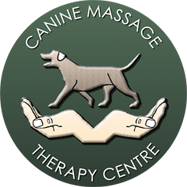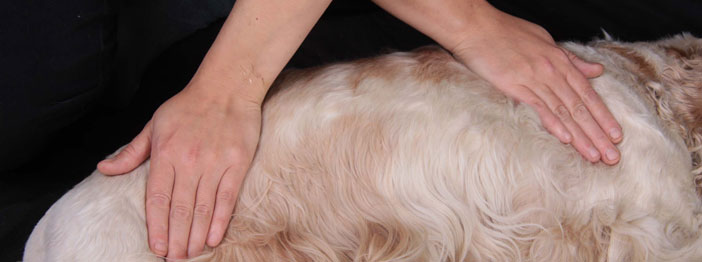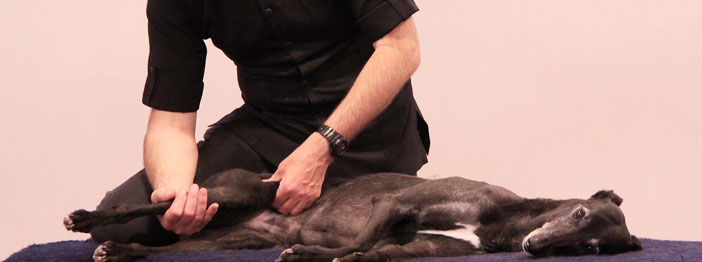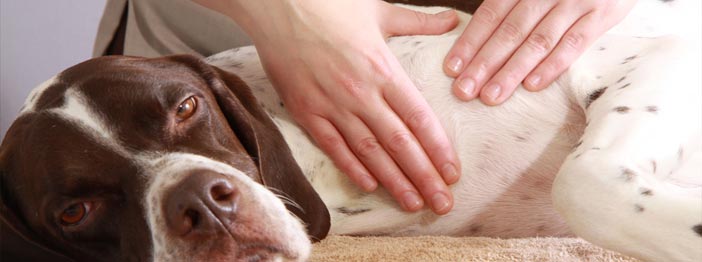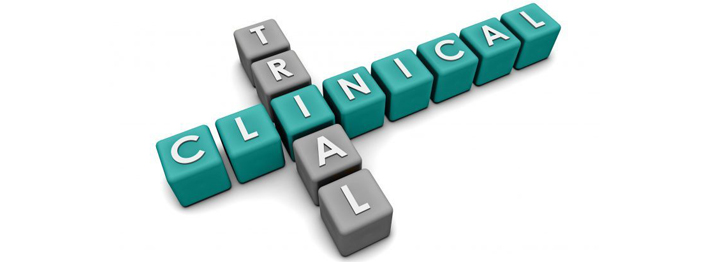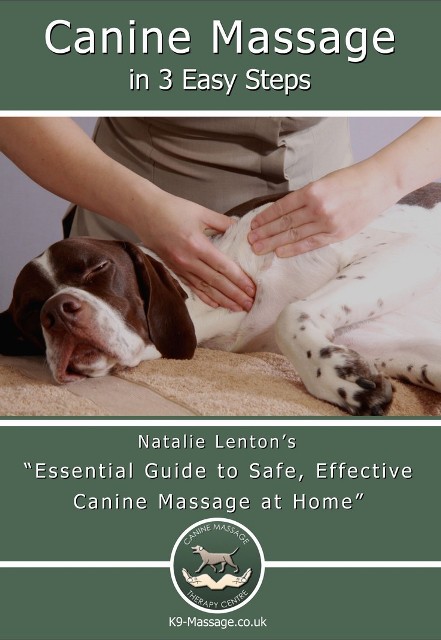
The cruciate ligaments (cranial and caudal) are bands of tough fibrous tissue that connect the femur to the tibia. Their job is to prevent forward shifting of the tibia relative to the femur and prevent over rotation or twisting. In other words the ligament helps hold the joint in place and provide stability. However when the ligament is torn this is called a sprain and causes instability.
Grade 1 – a minimal tear or SPRAIN of a ligament with a degree of internal haemorrhage
Grade 2 – A partial tear of the ligament
Grade 3 – Complete rupture of the ligament
Grade 4 – Ligament tears and takes with it small pieces of bone
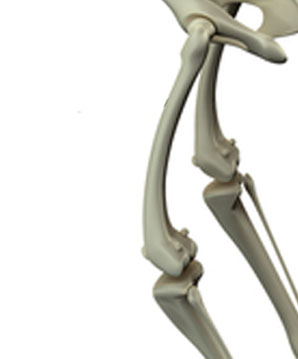 A Grade 1 Sprain will improve with rest, lead walks and a review of the dog’s activities of daily living. As a ligament has a reduced blood supply a Grade 1 Sprain can take up to 2 – 3 months to fully heal. This is when it is at its most vulnerable as a slight twist can cause a Grade 1 to become a Grade 2 so conservative management is important but can be difficult with high energy dogs.
A Grade 1 Sprain will improve with rest, lead walks and a review of the dog’s activities of daily living. As a ligament has a reduced blood supply a Grade 1 Sprain can take up to 2 – 3 months to fully heal. This is when it is at its most vulnerable as a slight twist can cause a Grade 1 to become a Grade 2 so conservative management is important but can be difficult with high energy dogs.
A Grade 3 Sprain being a complete rupture will require surgery as will a Grade 4.
Rehabilitation times after surgery is around 3 months or 6 months for giant dogs.
Causes:
Unlike a human’s cruciate ligament which will tend to injure as a result of a sudden trauma, a dog’s is different in the way that it degrades over time, much like the fraying of a rope.
- Ball chasing/ball launchers e.g. when the dog brakes to retrieve the ball an excessive twist or torque is applied to the joint causing massive stress
- Frisby
- General wear & tear
- Breed Predisposition e.g. Boxers/Giant Dogs/Collies/ Rottweilers, West Highland Terrier
- Landing from a jump incorrectly
- Stepping down a hole
- Breed conformation
- Trauma
- Living on slippy floors
- Obesity
- Hormonal Imbalance
Signs / Symptoms Of Cruciate Ligament Injury
- Lame/Limping
- Crying out in pain
- Unable to weight bear equally
- Not weight bearing at all
- Inflammation/swelling/heat around capsule
- Toes just touching the floor in semi flexion
- Stifle held out (abducted) to the side when sitting/standing
How Massage May Help
- Post surgery rehabilitation after TPLO/TTA
- Aids in combating lymphoedema (swelling)
- Helps areas of overcompensation on the unaffected leg – this is really important as quite
- Helps with back, neck and shoulder pain due to the dog having to adjust their gait and
- Reduces inflammation
- Promotes mobility
- Significantly improves comfort levels
- Pain management
To find a therapist in your area, check out the “Find a Therapist” page
